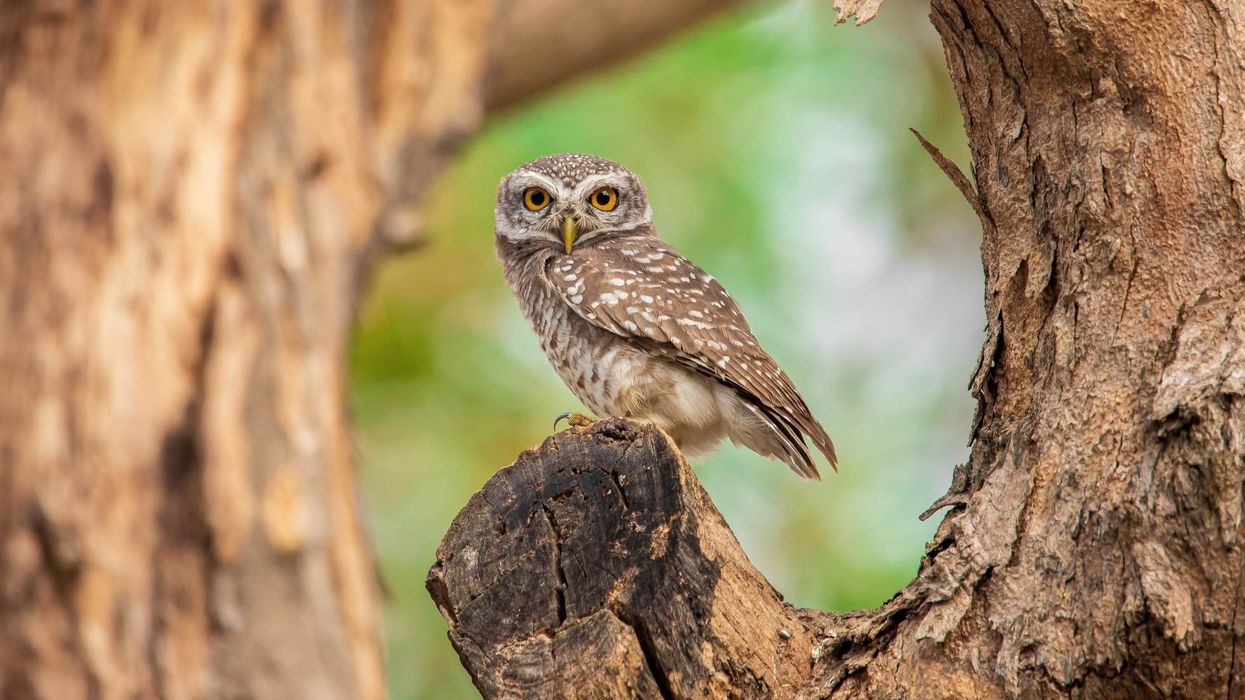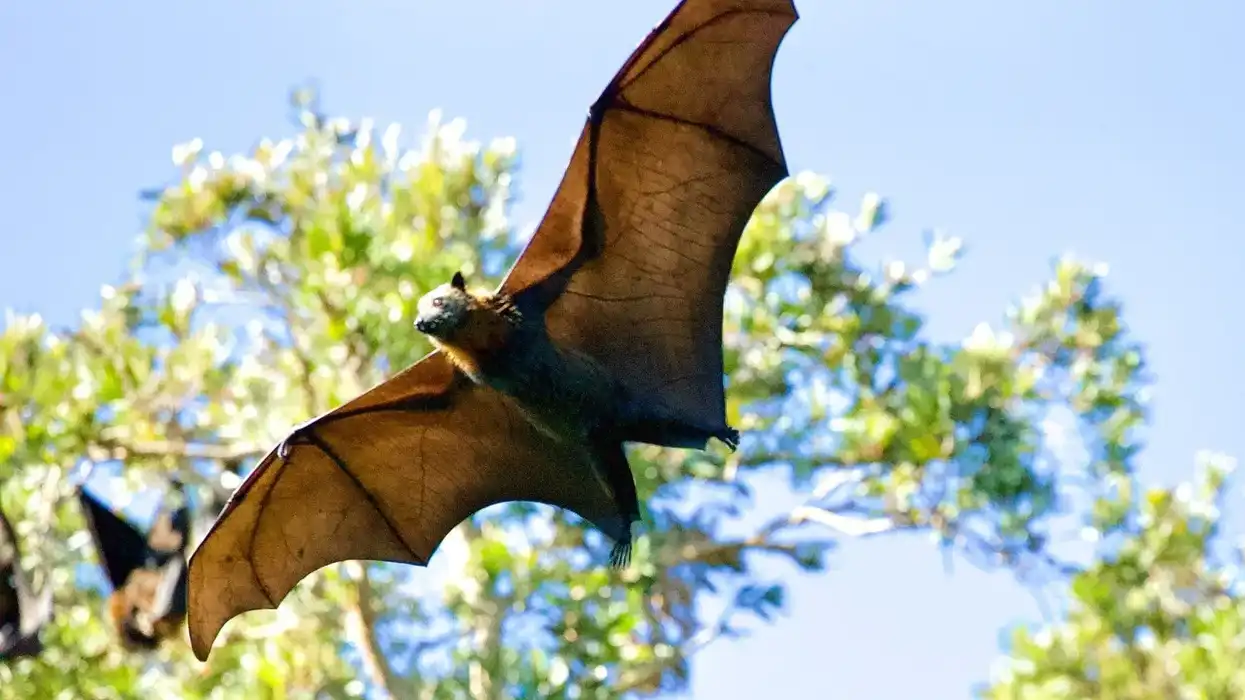The Indian nightjar (Caprimulgus asiaticus), which according to the ancient Latin myth was also known as the 'goat sucker', is a mysteriously colored nightbird. The Indian nightjar feather is black in color and they are distinguished by a short and black beak. The Indian nightjar appearance is so deceiving that you can't even spot it from a short distance.
The Indian nightjar is usually seen in woodlands and dry scrublands and also in open gardens across India. You will not be able to spot it unless you have a guide along with you.
If you want to locate the Indian nightjar bird, stay quiet to listen to a rapidly accelerating sound.
This species of bird is so small that it will go past your eyes if you do not stay silent. You will have a better idea about the species' population if you closely examine the Indian nightjar range map.
If you enjoy reading about the Indian nightjar here in Kidadl, you can also read about red-backed shrike and umbrellabird.
Indian Nightjar Interesting Facts
What type of animal is an Indian nightjar?
The Indian nightjar or the Indian nightjar Caprimulgus asiaticus is a species of small bird found across India. These birds stay camouflaged which makes it difficult to spot them easily. These birds are found in short trees and shrubs.
What class of animal does an Indian nightjar belong to?
The Indian nightjar Caprimulgus asiaticus belongs to the class Aves and the species' genus is Caprimulgus.
How many Indian nightjars are there in the world?
The exact population of the Indian nightjar is unknown. According to sources, the breeding area of the Indian nightjar is 8,210,000 km2.
Where does an Indian nightjar live?
The Indian nightjar Caprimulgus asiaticus is seen living in open woodlands and dry scrubs. If you search for them on tall trees, you will not find them. A bird of this species rests on the ground or you can spot one living in short trees.
What is an Indian nightjar's habitat?
These gray and brown-colored birds are common in Northwestern India and also in certain regions of Pakistan. You can also find it in the foothills of the Himalayas, certain parts of Bangladesh, Myanmar, and Vietnam.
Who do Indian nightjars live with?
Indian nightjars usually live in small packs. They are good at hiding and it becomes difficult to detect their blending. They are related to many of the best camouflaged animals. They are found in open grounds, so they live mainly with insects and bugs. You can find them on roads with vehicle headlights at night.
How long does an Indian nightjar live?
An Indian nightjar Caprimulgus asiaticus usually lives up to 10 years.
How do they reproduce?
These birds do not make any fixed nests, unlike other birds. The gray and brown-colored bird rests their eggs on the ground. It might also lay its eggs on leafy ground.
The Indian nightjar eggs are pink in color and each female lays two eggs at a time. The incubation period of these birds lasts for almost 19 days. This species of bird breeds when there is an abundance of food so that they don't have to face complications while feeding the newborn.
What is their conservation status?
According to the IUCN Red List of Threatened Species, the Indian nightjar is listed as Least Concern and their population trend is also stable.
Indian Nightjar Fun Facts
What do Indian nightjars look like?
As per the description, this species of bird is so small that it is difficult to detect blending. They are related to many best-camouflaged birds.
Both the Indian nightjar male and the Indian nightjar female have distinctive physical features like feathers on the wing. The white patches are much more distinctive in males while females' crowns are brown-streaked. These brown-streaked females of the genus caprimulgus are distinguishable.
The upper part of this species of bird is gray and brown and is marked by black and brown streaks. White patches are also found on either side of the throat.
The head is darker in color compacted to the feathers on the wing and tail. These birds are short and white-tailed and you might also find white patches and two brown stripes are found on the breast running below the throat.
This white-tailed bird has a golden nape and collar. In the day Indian nightjar lies on the ground and is concealed by its plumage, which makes it difficult to detect blending.

How cute are they?
This gray and brown-colored bird is small but is not colorful and attractive. They are so tiny that you can only spot them at night whit vehicle headlights. The coloration of these birds does not make them so attractive.
How do they communicate?
You can only hear these white-tailed birds communicate during dusk and in the dawn and during the rest of the day Indian nightjar lies silently on the ground concealed from the environment. Both during the dusk and the dawn, these birds call out with a series of clicks, and gradually the call becomes short and rapid.
Like any other nightjars, the Indian nightjar, too, sings extensively at night. Their call also sounds like a ping pong ball bouncing and then suddenly comes and rests.
How big is an Indian nightjar?
The Indian nightjar is one of the smallest birds in Asia. It is around 9.4 in (24 cm) in length. It is larger than a lesser goldfinch and about the same size as a palm warbler.
How fast can an Indian nightjar fly?
The exact speed at which this bird with white patches flies is unknown. You won't find them in flight during the day; they will remain on the ground, concealed by its plumage. They are seen flying after sundown with an easy silent swift nature looking for moths and other insects near the open ground.
How much does an Indian nightjar weigh?
The Indian nightjar is one of the lightest birds present in Asia. It weighs around 0.1- 0.2 lb (0.05- 0.1 kg), making them lighter than the European goldfinch.
What are the male and female names of the species?
Both the male and the female names of the species are the same. These Caprimulgidae are known by Caprimulgus asiaticus.
What would you call a baby Indian nightjar?
There is no specific name for an Indian nightjar baby. In ancient times nightjars were also called 'goatsuckers.'
What do they eat?
During the day, Indian nightjar lies on the ground concealed by its plumage, making it easier to hunt for insects, flies, beetles, ants, and caterpillars. This bird with a golden collar in search of food flies after sundown and hunts for insects near street lamps and other artificial light sources.
Are they poisonous?
These birds are not among the poisonous birds of Asia. But research says that the increase in mines and factories has resulted in metal-related skeletal disorders in these birds of Asia, leading to long-term defects.
Would they make a good pet?
The Indian nightjar like other species is not good-looking. They are wild birds and should be left in the forest.
Did you know...
This bird is rare in the UK and only one species is found there.
These birds produce a shrill and soft sound during breeding.
These birds are also called flightless birds as they do not fly during the day.
You will not find an Indian nightjar migrate. They stay at one place and only flies after sundown for food.
Why is it called a nightjar?
A nightjar is called a nightjar because of its distinctive cry. It is also called the goatsucker because according to myth it used its big mouths to milk goats at night.
These birds are rare and are not easily located by the naked eye. One unique thing about the nightjar which also gives it this name is because during the day they stay camouflaged on the ground and only flies after sundown in an easy silent stealthy way.
Do nightjars sing all night?
A nightjar can be heard singing all night. This bird with white patches with an easy silent like flight roams at night in search of food.
Like all other nocturnal birds like the nightcrawler and the owl, the nightjar sings all night and remains silent during the day. The low light triggers these birds to sing from dusk till dawn.
Here at Kidadl, we have carefully created lots of interesting family-friendly animal facts for everyone to discover! For more relatable content, check out these canyon wren facts and snowy plover facts for kids.
You can even occupy yourself at home by coloring in one of our free printable bird coloring pages.









